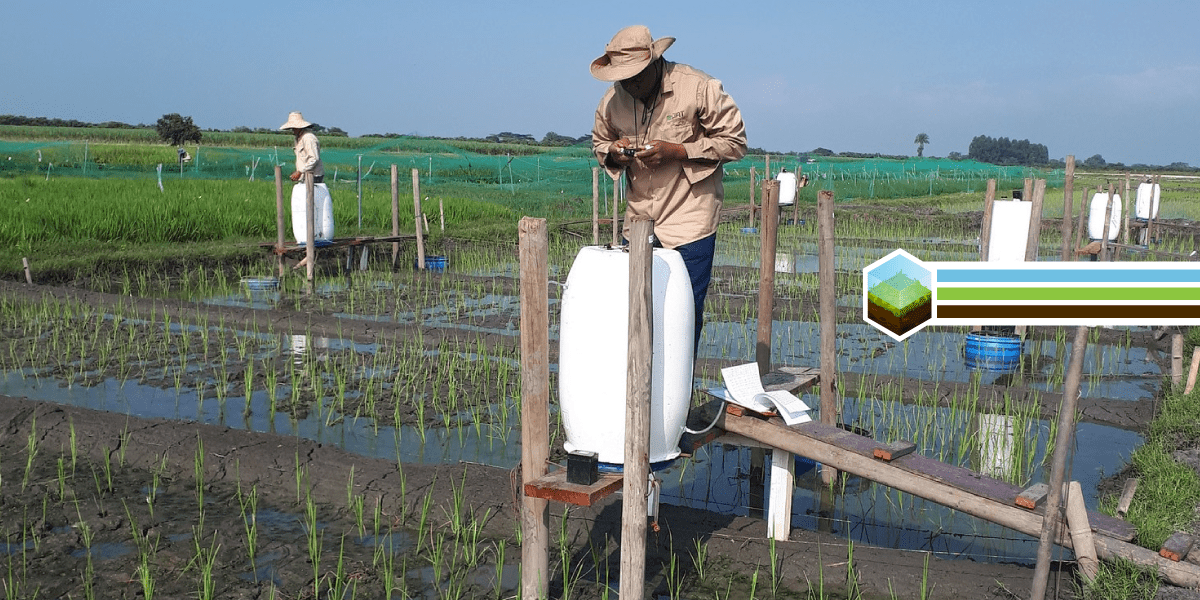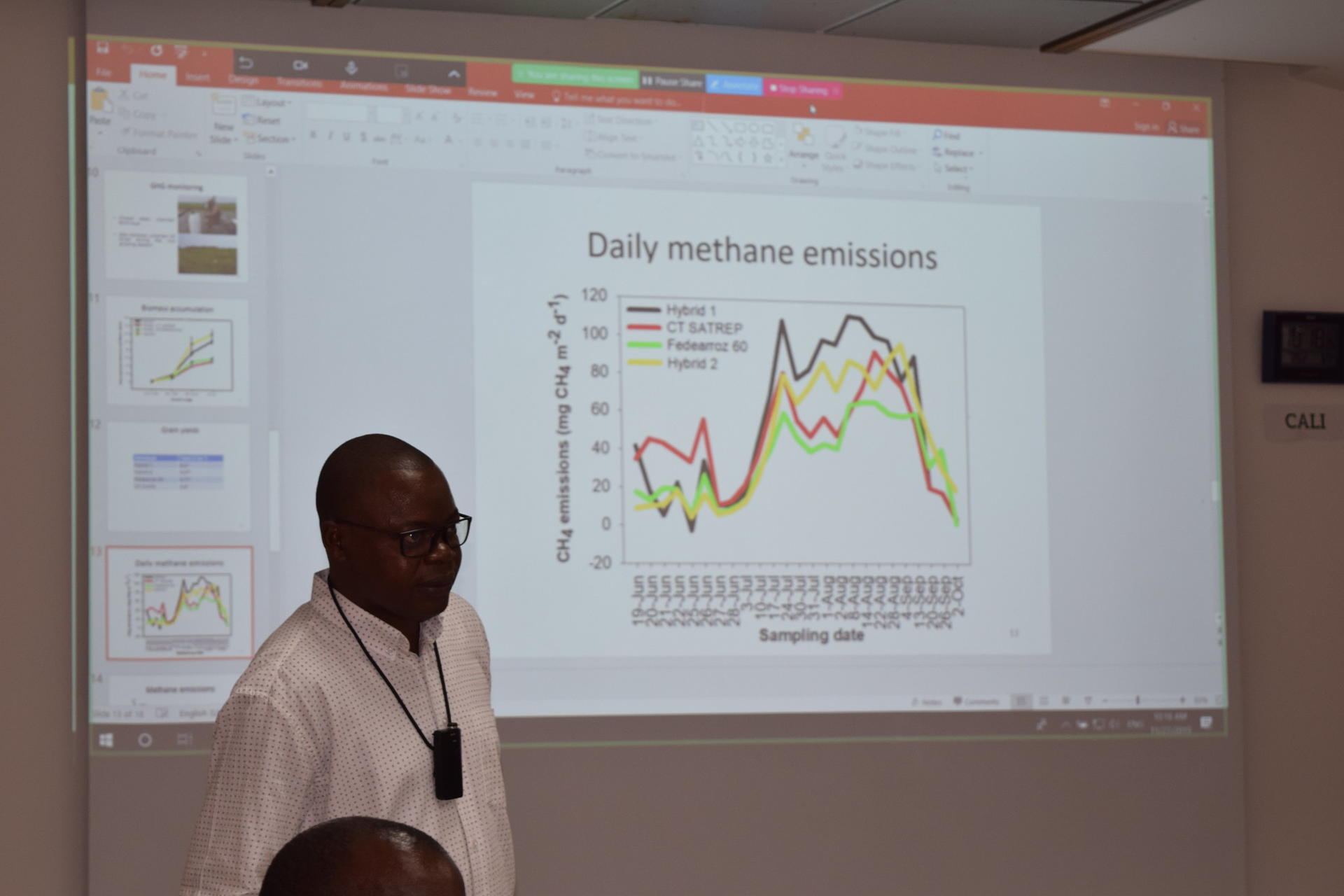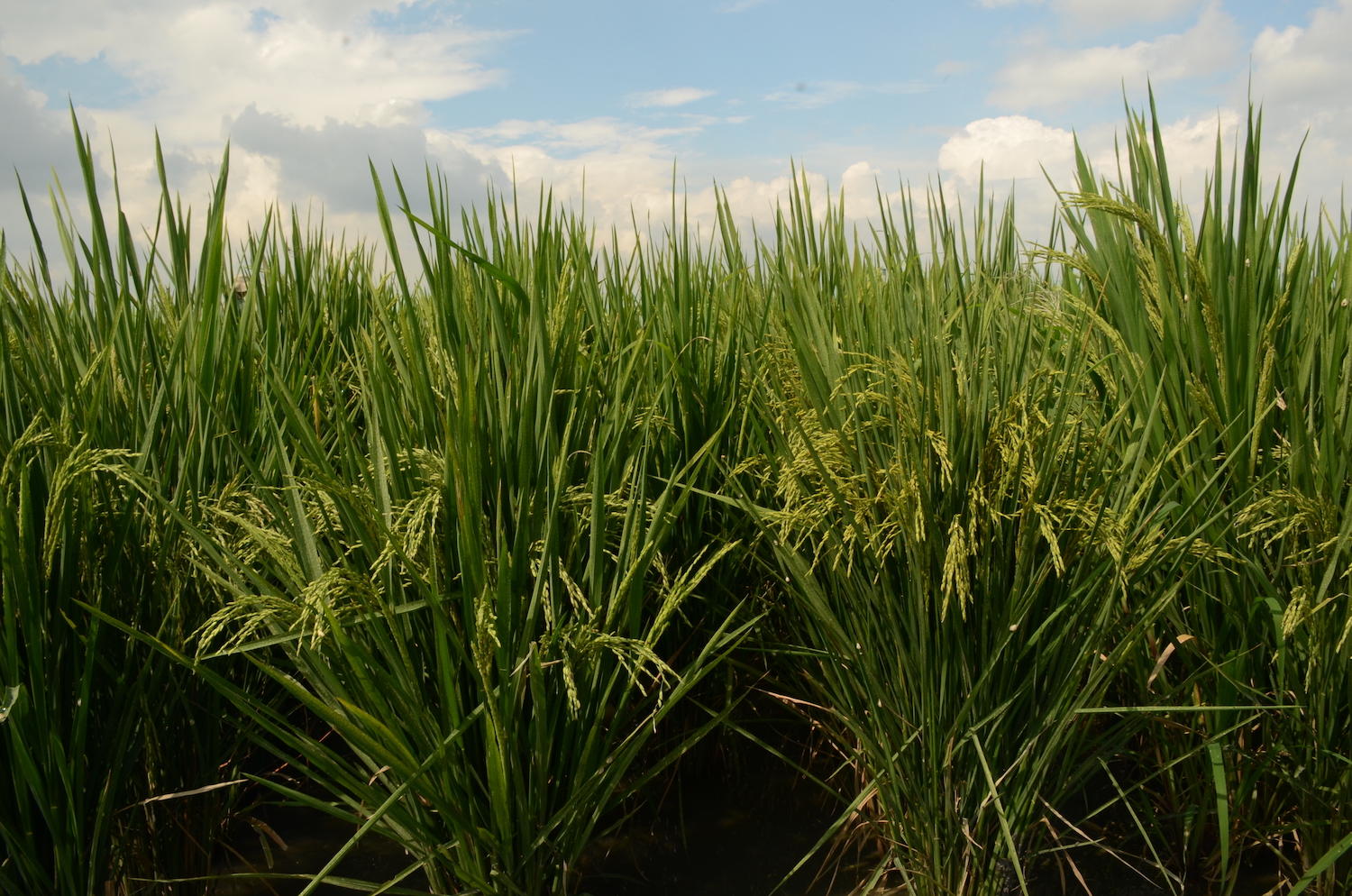Research Articles In Search of Rice To Reduce Methane Emissions

Livestock, the petroleum industry and landfills are all leading producers of methane, a potent greenhouse gas. But another significant but less well known contributor is one of the world’s most popular crops: rice. Rice plants transport methane from the flooded rice field into the atmosphere. A new paper from researchers at the Alliance of Bioversity International and CIAT has found that it is possible to lower emissions by developing new varieties of rice.
By: Andrew Wight
According to the World Bank, rice farming is responsible for 10% of global methane emissions and is also a contributor to nitrous oxide and carbon dioxide emissions. Despite this, greenhouse gas emissions from rice systems, particularly in the Latin America and the Caribbean region, has been a largely untapped research area for the reduction of global emissions.
In a new paper, “Potential of rice (Oryza sativa L.) cultivars to mitigate methane emissions from irrigated systems in Latin America and the Caribbean,” published in the journal All Earth, researchers from the Alliance of Bioversity International and CIAT found that the transition to low-emission rice production systems can be accelerated by using differences in productivity and root qualities to breed a variety of rice that can maintain current yields but lower overall greenhouse gas emissions.
The team explored the genetic influences on methane emissions and highlighted the need to exploit and further develop hybrids that take advantage of differences in roots and other above-ground plant anatomy on methane emissions.

Paul Soremi in the field. Credit: Maria Fernanda Alvarez
María Fernanda Álvarez, rice programme leader at the Alliance of Bioversity International and CIAT and one of the authors of the paper, explained that although the higher yielding hybrids they studied have a higher absolute methane emissions than current varieties, they produce similar methane per grain of rice. This implies that by adopting rice hybrids, farmers can achieve food security goals without significantly increasing the methane emission per grain of rice compared to lower yielding varieties.
“We must acknowledge that it's not easy to reduce methane emissions and maintain productive rice systems, but our results suggest that there is hope,” Álvarez said.
Reducing Rice Emissions
When soil is flooded, as in rice production, this produces low-oxygen (anaerobic) conditions in which methane-producing bacteria thrive.
The rice plant uses aerenchyma, a spongy chimney-like plant tissue, to allow oxygen to move down into the roots and the methane-producing bacteria in the soil are using the same tube to send methane up into the atmosphere.
Paul Abayomi S. Soremi, the paper’s first author and currently a lecturer at the Federal University of Agriculture in Abeokuta, Nigeria, explained that under submerged conditions, the roots of plants in general and rice in particular are responsible for taking up and expelling gasses, including methane.
“The challenges to decrease methane emission through the expression of aerenchyma include the non-availability of adequate and up-to-date equipment to characterize aerenchyma, huge consumables requirement and inadequate human capacity,” he said, “This requires huge financial investment.”
Soremi explained that this aspect of methane transfer has not been fully investigated.
“There is a dearth of appropriate information on the optimization of aerenchyma to decrease methane emission under submerged conditions,” he said.

Paul Soremi presenting findings on reduced methane emissions.
A Lower Emissions Future
Ngonidzashe Chirinda, a professor of sustainable tropical agriculture at Morroco’s Mohammed VI Polytechnic University, a co-author of the paper and an expert in the greenhouse gas impact of agriculture said that further research into the physiology of the plants was needed to develop the next generation of low-emissions varieties.
Chirinda explains that while there are no “silver bullets” when it comes to rice farming emissions, the hope is to get community buy-in and even potentially certify the emissions reductions in the future so that farmers are compensated for lowering emissions while maintaining or increasing their harvest.
“To scale up, you need to incentivise the farmers to implement the good practices and if you can get a rice that is low emitting, but high yielding, they can achieve both goals,” Chirinda said, “Everyone wins: the farmer wins, the environment wins and the future wins.”

Hybrid rice varieties in the field.

